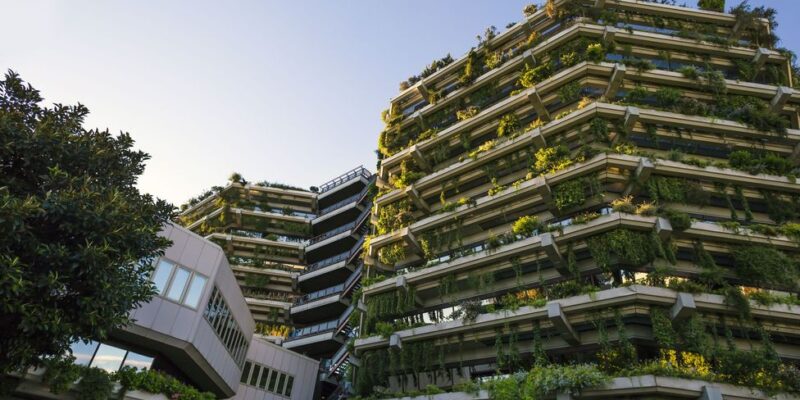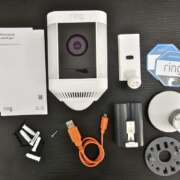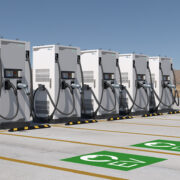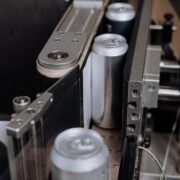Have you ever dreamed of living in a home that is not only beautiful and comfortable but also takes care of our planet?
Every part of your future home, from the floor beneath your feet to the roof above your head, can make a statement about who you are and your commitment to the environment.
If you’re ready to step into the future and build a home that embodies eco-consciousness, read this detailed guide on eco-friendly home design and technology.
How to Create Eco-Friendly and Sustainable Custom Homes?
Designing an eco-friendly custom home integrates sustainable materials, energy-efficient technologies, and green building practices into the design and construction process. A crucial part of this endeavor is efficient heating and air conditioning, which can reduce energy consumption and carbon footprint significantly.
The first step towards building an eco-friendly custom home is to minimize its carbon footprint. This can be achieved using renewable energy sources such as solar panels or wind turbines.
Additionally, improving your home’s insulation can significantly reduce the need for heating and AC, decreasing energy consumption.
Planning and designing the house to utilize natural light and heat can minimize electricity usage. Furthermore, incorporating smart home technologies can help monitor and optimize energy use.
For instance, the strategic placement of windows can allow sunlight to heat rooms naturally in the winter. Similarly, shading and ventilation can cool rooms in the summer, reducing reliance on heating and air conditioning.
Sustainable Materials for Building Eco-Friendly Homes
When planning your eco-friendly home, choosing sustainable construction materials is paramount. This principle applies from the foundations up to the final cabinet installation.
Bamboo Flooring
Bamboo flooring is perfect for those seeking to balance aesthetics, durability, and environmental responsibility. Bamboo grows much faster than traditional hardwood trees, with some species maturing within three to five years. This quick growth rate makes it a renewable resource, reducing the impact on forests. Bamboo floors are durable and long-lasting, giving your home a warm and appealing look.
Recyclable Glass
Recyclable glass is a versatile and sustainable choice for home building. It can be used for numerous applications such as doors, windows, partitions, and cabinet installations. Recyclable glass is preferred because of its insulation and light passage benefits. Double-glazed glass windows can provide excellent insulation, reducing your reliance on heating and air conditioning. Moreover, glass allows natural light to permeate your space, reducing your need for artificial lighting during the day.
Recycled Lumber
Recycled or reclaimed lumber is another sustainable building material. It is typically sourced from old structures such as barns, factories, or warehouses. By choosing recycled lumber, you’re giving new life to old wood and significantly reducing the demand for new timber, thus contributing to forest conservation. Beyond its eco-credentials, recycled lumber can also provide unique aesthetic appeal, with its weathered look and rich history adding character to your home.
How to Build An Eco-Friendly Home Pool
If you want to build your own pool, it’s essential to make it eco-friendly. Choose a natural or organic pool that uses plants to filter the water, instead of harmful chemicals. This reduces environmental impact and gives your home a unique, natural aesthetic.
What are the Benefits of Eco-friendly Homes
Adopting eco-friendly home design and technology comes with many benefits, from conserving natural resources to improving the quality of life for inhabitants. Here are some of the notable advantages:
Increase Home Value
A home with sustainable materials and technologies often has a higher resale value. As eco-consciousness grows among buyers, demand for environmentally friendly homes is increasing. Therefore, investing in sustainable home features can be a profitable long-term decision.
Energy-Efficient Lighting
Energy-efficient lighting like LED bulbs use significantly less electricity than traditional incandescent bulbs and last much longer. They provide excellent lighting quality and can save substantial energy and money over their lifetime.
Reduced Water Usage
Eco-friendly homes often incorporate systems for reducing water usage. This could include water-efficient fixtures, rainwater harvesting systems, and drought-tolerant landscaping ideas for a small home. Such measures not only conserve water but also reduce utility bills.
Improved Indoor Air Quality
By using natural and non-toxic materials, eco-friendly homes improve indoor air quality, making the living environment healthier. A well-designed and well-maintained heating and air conditioning system can help reduce allergens and pollutants, improving indoor air quality.
Lower Maintenance Costs
Eco-friendly homes are designed with sustainability and durability, lowering maintenance costs. Using native plants in your landscaping ideas for a small home can further reduce maintenance as they naturally adapt to the local climate and require less care.
Furthermore, features like durable bamboo flooring and recyclable glass in cabinet installations are more likely to stand the test of time, saving you repair and replacement costs in the long run.
The Bottom Line
Constructing an eco-friendly home allows us to live in harmony with the environment. It’s an investment in energy-efficient technology, sustainable materials, and smart design—benefiting our planet and our wallets and well-being.
The impact will be significant as we each play our part in building a greener future. Your eco-conscious home will be a testament to innovation, a healthier lifestyle, and a sustainable future. Embrace green living today.










Comments